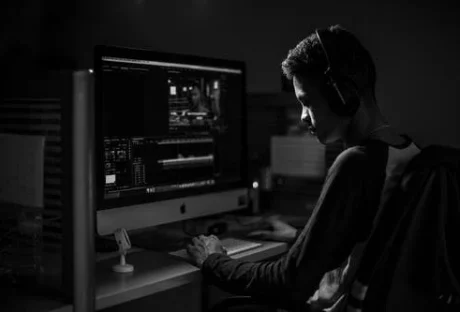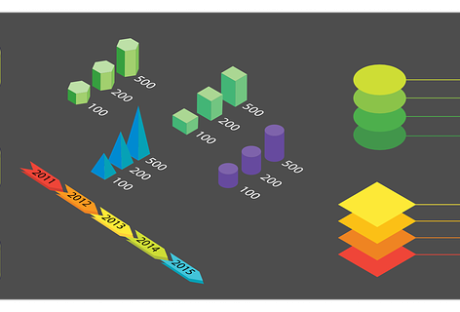Packaging. Such a common, everyday word.
It has become embedded in the lives of consumers that, unfortunately, many businesses have forgotten just how important and valuable it is.
The thing is, even that seemingly simple packaging holds immense power. It can either make a buyer spend money or make them put it back on the shelf and pick up another similar item.
After all, consumers, for the most part, see only the packaging when they purchase items directly from a store. Just think about it, packaging covers about 100% of most products you see in stores.
There’s also the fact that what covers a product – and what’s on it – makes up about a third of most purchasing decisions.
If you’re having trouble thinking up methods on how to design packaging and custom boxes, worry not, as we’re here to help. In this post, we’ll give you some of the best packaging design tips.
It All Starts with Understanding How Packaging Works :
First, let’s talk about what packaging is and how essential it is to branding. Why it has grown to become a $9-billion industry.
At its core, the packaging is the method and the materials used to contain, cover, safeguard, and transport items. The methods can vary from cleaning to preserving. Materials differ too, with the most common being cardboard, paper, plastic, metal, glass, and metal.
The thing is, packaging has many more roles than just giving products a pretty face. Indeed, it’s a powerful tool to attract the attention of buyers. It’s crucial in branding awareness and recall.
More than that though, it’s vital in helping reduce product waste. For instance, research has shown its great importance in keeping food and beverages edible.
In other industries, its ability to protect items significantly reduce potential damages, which then lessens the need to throw them out for replacement products.
In the food industry, effective packaging for food products can be made with sustainable materials.
In fact, a recent study noted that socially-responsible packaging now plays an important role in buying decisions. More than half (52%) of the study’s participants noted they spent money on a product/service from companies using eco-friendlier packaging methods.
Also, take note that packaging also has a lot to do with product safety. This is especially true for products that are for human consumption, including food, beverages, and medication (including vitamins and supplements).
You want your customers to safely reap the most out of their purchase, and at the same time, remain in compliance with packaging laws and regulations.
Simple Packaging and the Immense Branding Power It Boasts Of :
You want to make sure your product, as soon as it’s ready, goes on display right away. But you can’t really say it’s ready, not unless you’ve also made certain that its packaging is 100% ready to go.
Whether you go for a box, bag, wrapped, taped, or glued packaging elements, every element of your packaging should incorporate what’s mentioned above. You also need to ensure that it possesses all the right components for effective branding.
Consider this:
The average grocery stores now sell 40,000 more products than they did two decades ago. In a place where your products compete with many of these said items, how you package your brand’s offers can make or break the deal.
Again, it can either make consumers want to put it in their shopping carts and pay for it or put it back on the shelf and buy a competitor’s product instead.
Essentially, product packaging is your primary selling tool. After all, it’s the most tangible method to represent your product and brand to your target market.
Keep in mind that you only have seven seconds to leave a positive impression on consumers, so you need to make them see instantly why they’d want to spend money on your offers.
All these said you need your product packaging to have eye-catching features. But it also needs to retain functionality and should be economical. And for eco-friendly consumers, sustainable materials.
The Right Elements that Go into Successful Packaging :
Just as how you’d carefully review all the elements of your social media marketing campaign on Facebook, the same goes true for inspecting all your product packaging elements.
Again, how you package items can instill better brand awareness and recall. For it to help your brand achieve success, it needs to boast of the right elements.
What elements are these? Brand logo, color, shape, and typography are the most essential.
Brand Logo :
The position itself of your brand on your packaging can also make or break a buyer’s decisions.
Therefore, you want to implement the best positioning strategy for your brand logo for consumers to notice it right away. Also, keep in mind that logo placement affects brand recall.
Color :
Color affects – either in a positive or negative manner – consumer buying decisions.
For instance, studies reveal that 85% of consumers buy products because of its color. They also cite that color can raise brand awareness up to a whopping 80%!
Of course, you still need to base the colors you choose on your products/services. For example, if you want to stir emotions of urgency and leave an “energetic vibe,” you’d want to consider using red as a primary color.
Just check this service and see how your mind and body reacts to it.
Shape :
Even the shape of your product packaging can already say a lot about the product it contains!
You should then use this as another tool to better market your brand’s offers. For instance, angular shapes speak to men, while curved shapes are more ideal for female-centered products.
Packaging for Ease of Use and Better Branding :
These aren’t the only reasons you need to be more aware of the great power behind the packaging.
Even simple packaging can elicit an “Ooh” from potential buyers rather than just a regular “Ahh.” So, as early as now, especially before launching new products to the market, make sure your packaging has all the vital elements for better branding.
And for more business tips and tricks that’ll help you better shape your brand, make sure you check our blog.
Read Also :






















